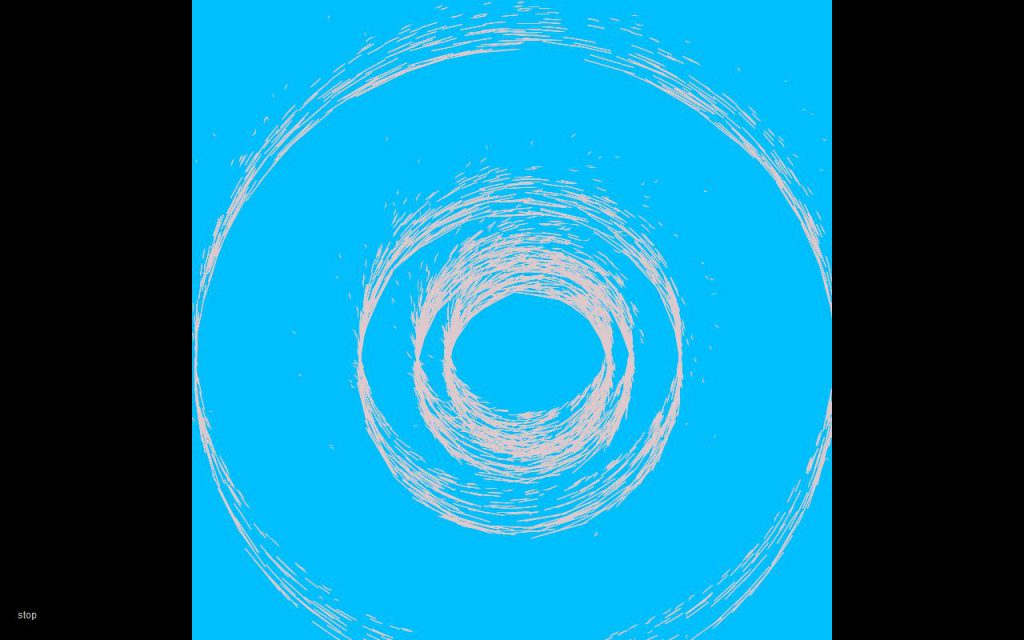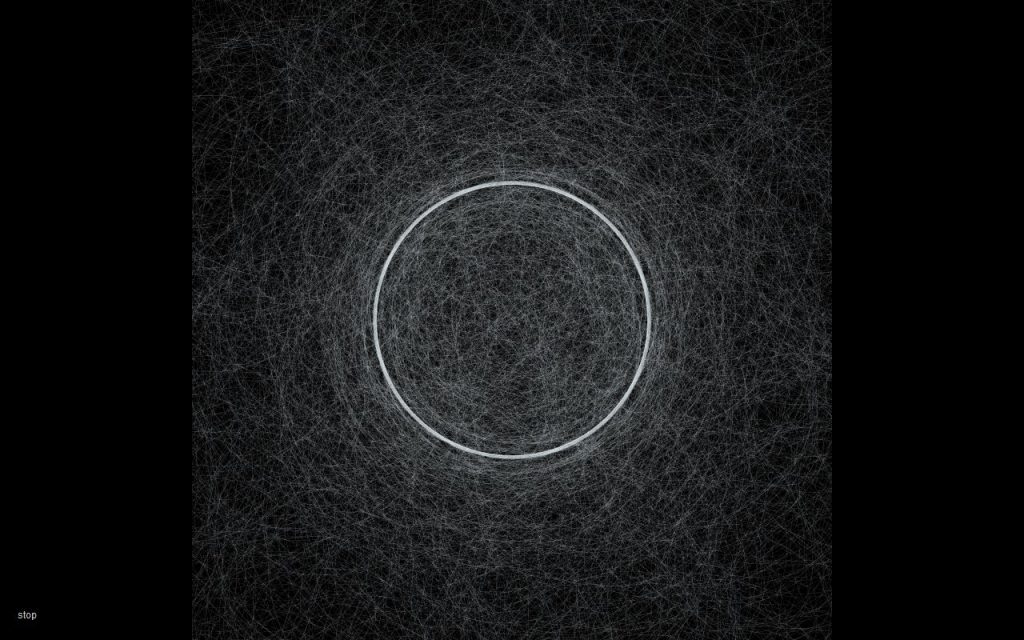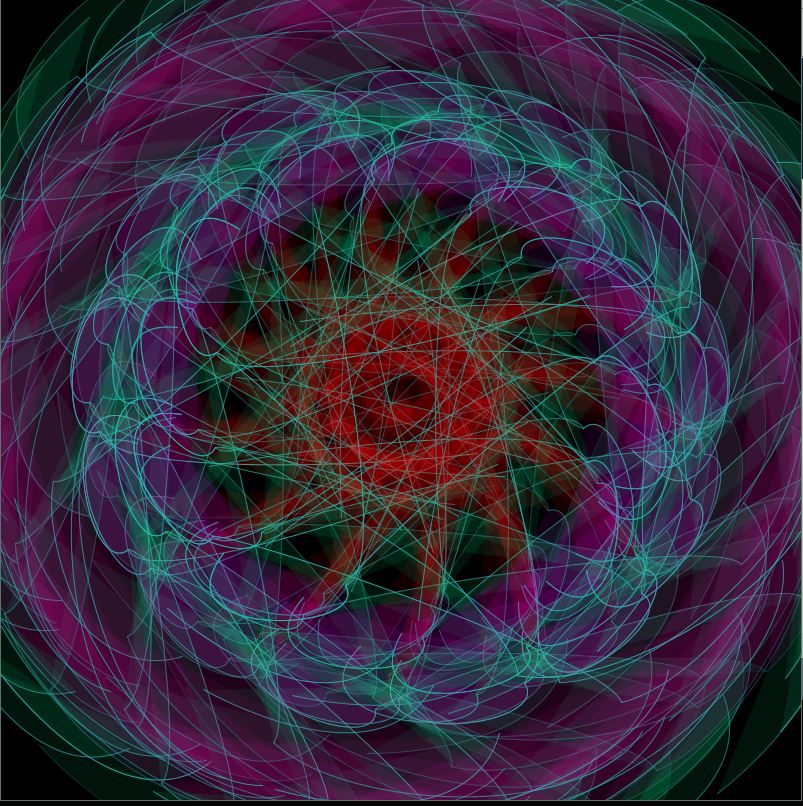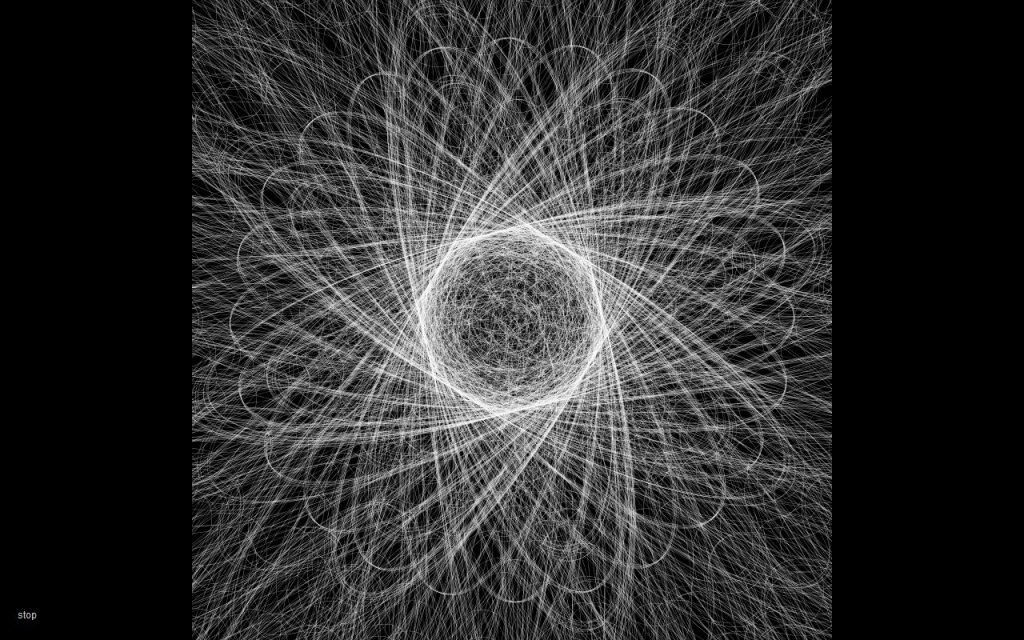
Generative art refers to art that has, in some way, has been created with the use of an autonomous system, or in the computer art lens, an increment or property of randomness.
This was catalyzed by Max Bense in his statistical analysis and aesthetic laws. This art combines the measurement of the aestheticism with the mathematics behind its creation. George need, a student as well as a fellow pioneer of the technique of randomness, use this to make computer plotting art solely by combining this idea with the aspect and amount of rules regulating it. The relationship these two things have allowed the computer to do, in a way, self-governs aspects of art creating an “Artificial Art” drawing machine.
When looking at Nees work, it is evident that the pieces were not strictly constructed but rather mimic nature with the rigor of straight lines, combined with simple random features allowing for variation in figure and form. In attempting this I definitely struggled in finding and maintaining the initial conformity in the piece, while trying to find small increment to make pseudo-random that wouldn’t ruin the initial pattern.
To keep on task, I l looked to nature and interaction because of the continuous referencing to realism, nature and its associated randomness “The search for random behavior is an enduring trait of human behavior. For many, chance somehow revealed the unfathomable and convulsions of nature.” This really helped me find referenced other than those directly sourcing from Nees. I looked to nature and the natural yet random movements the elements within it do “The methods for generating chance or randomization were diverse from casting animal bones to tossing many-sided die. The use of chance mechanism to solicit divine direction— called divination—was to guarantee the .”
My first piece I wanted to work on the movement of air with water in particularly circular motion. Similar to Nees I wanted to use randomness to allow the circular motion i was working with to be more random, not one exact shape but rather a variety that tunes in to the nonconformity and repetition of nature. To do this I looked at the concept done in Nees boxed—, and the gradual yet random rotation increment that allowed a strict rigid grid of boxes to progress into a warped rotation of them. I chose to randomize rotation too in mine, letting the computer choose from (1 to axis_x + x*10/2;) to try to constrain how astray each ellipse would be in said rotation. I also added randomness in the length of the ellipse more enforce the idea of a spiral.
For my second artwork, I looked at the sun, and the abnormality or randomness of the rays it produces, especially in media like movies and images where the sun’s rays like such are emphasized. In this artwork I used vertexes to symbolize the rays and again used the concept of randomized rotation in order to display this. However I also wanted there to be another aspect dictating the movement and creation of these rays. Knowing that it was unrealistic for the size of the “sun” to remain constant, I used the mouseX and Y component to mimic the movement of one’s position when looking at the sun and for the rotation increments.
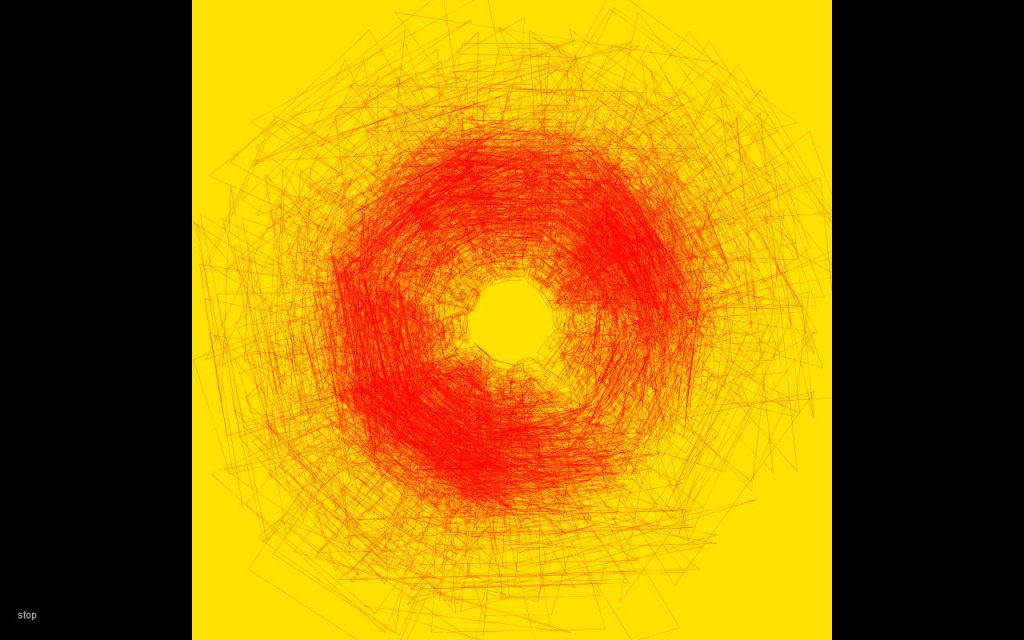

For the last one I looked the stars and constellations and wanted to show the fiery movement of a star from different perspectives. I think this work was my most challenging because in order to achieve this idea I really had to use randomness to my advantage, especial in its relation to the x and y positions. In contrast to what was done in the sun work, instead of putting randomness in the rotation I put randomness on the location of the mouse relative to circle and the multiplier of the location. This allowed for the mouse to control two different randomized outputs for each input creating glimmering effect

